Who We Are
Black Theatre in the Bay Area
I have worked in the San Francisco Bay Area for more than twenty years. I am currently an Artistic Associate at The Lorraine Hansberry Theatre (LHT) and work as the Marketing Director for BRAVA Theatre Center. From this unique vantage point, I have been charged with unpacking the complexities of creating black theatre in a city that is 48% white, 33% asian, 15% latino, and only 6% black.
Black theatre institutions have historically been the primary training ground for professional black theatre artists. This is no longer true. Many play development labs, experimental theatres, and even persistently white universities now hold space to develop black theatre. It is part of many theatres’ mission and almost every theatre now in the United States has developed at least one black theatre artist and continue to attract newcomers. Here in San Francisco, the American Conservatory Theater (ACT)—alma mater of Denzel Washington, Danny Glover, and Anika Noni Rose—consistently attracts black students and currently at least a third of the class is black.
What is still true, however, is that San Francisco black theatre institutions, like LHT and African American Shakespeare Company continue to offer opportunities for training professional and semi-professional black theatre artists. The creation and consumption of American theatre still remains, largely, for those who can afford it. Training at a formal institution such as ACT may be the fast track to a professional theatre career, but is cost-prohibitive for many. Even with formal training, the scarcity of available roles limits the growth of black artists who create for the American stage. In San Francisco, most of ACT’s black graduates find it difficult to find enough work to sustain their continued residence in the city, which then makes it difficult for theatres to offer plays with black casts. Black theatres address this catch-22 by continuing to train and offer substantial work to those actors who cannot meet the cost of a theatre education, or have formal training but no opportunities upon graduation.
The efforts of black theatres help allow the theatre artists to both to thrive in San Francisco a city that has experienced an “outmigration” of the black population. The cost of living and lack of a cohesive community for black professionals has decreased the San Francisco black population. Working through this mass exodus, coupled with the loss of their space, Steven Anthony Jones has re-branded LHT as a nomadic theatre, “taking theatre to the people.”
In a recent meeting between the two companies, BRAVA and LHT both declared their commitment to the theatrical work of black women; the right and necessity to be present, supported, and accounted for in recognition of the sweeping gentrification and “white washing” of low-income neighborhoods that is pushing people of color and artists further and further from the city—dispersing the community that is at the heart of both organization’s mission. BRAVA has maintained a building inside of the Mission community for the past twenty years and therefore has a crucial need for the retention of artists and communities of color to be in the city and in the neighborhoods BRAVA serves. However, there is a lack of real initiatives in place address this particular fact (though it must be noted that Mayor Ed Lee, has paid excellent lip service to the importance of the artistic community in the shaping of the city—presenting the 2013 Arts Award to Rhodessa Jones and declaring that artists were the crucial factor in creating the tech boom San Francisco has currently experienced).
BRAVA Executive Director, Stacie Powers Cuellar noted,
…I think where the city needs to step up and make some effort is on the cultural diversity of the city and the direction that its heading [....] that we have some recognition and support from the city that supports maintaining the cultural diversity of the city and furthermore, to me, creates housing for artists, somewhere along the way, because that’s really part of the bigger picture.
Steven Anthony Jones has responded to the current cultural forces at play by pushing the boundaries of black theatre. Jones' first season as Artistic Director of LHT included a latino tinged version of Douglas Turner Ward’s Day of Absence and British writer Joe Penhall’s Blue/Orange. More recently, LHT conceived a cross cultural project, The Jamaican Wash Project, which reworks Philip Kan Gotanda’s 1980s The Wash—a tale of familial love and loss among Japanese-American immigrants that was made into a film in 1985—and adapts it to the Jamaican-American community. During the project, Gotanda spoke often and eloquently about “moving the center”—what happens when you don’t adapt within the dominant cultural paradigm and rather shift what is found in the margins to the center. This expansive view on what and how black stories get told encompasses the world view of many of the plays that are being written today by black playwrights who often present black characters in either less traditional ways—where concerns of blackness are not central to the character’s journey, stories offer a more generalized and inclusive vision of race; and sometimes there are no black characters at all. Steven comments,
Lorraine Hansberry is a black theatre but...I am not interested in fighting those (same) fights, I am not interested in running a theatre that is a museum...We live in one of the most diverse areas in the entire country…Our experience isn’t seen as universal...but that is just not the case. I hired latino artists and got flack from my core black audience who asked me why I had mexicans on stage.
San Francisco is also home to Cultural Odyssey (founded by Rhodessa Jones and Idris Ackamoor) and African American Drama Company (Philip and Ethel Pitts Walker). Still, most theatres in the Bay Area seem to only accept work by and about black people when it has already generated a tremendous amount of buzz and energy. The commitment to cultivating our own institutions and institutional contributions is crucial to the legacy of American theatre—not to control, but to expand the image of the black experience. The American theatre and black theatre must stride autonomously and collectively into the future if we wish our stories to impact the national cultural consciousness.


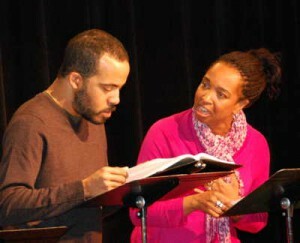
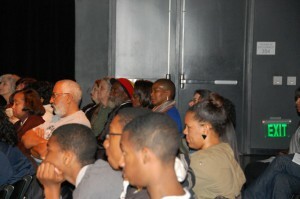
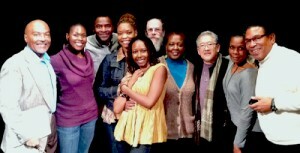
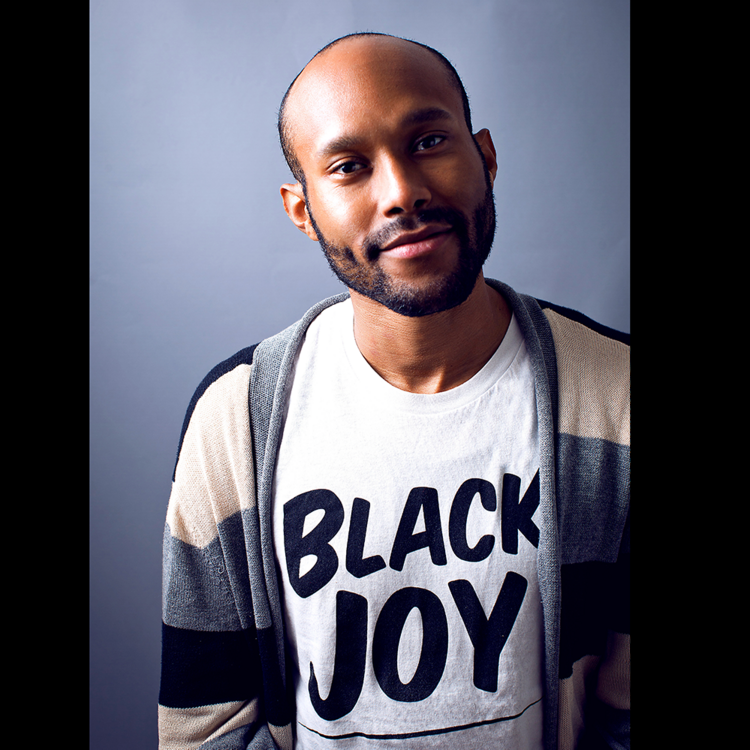
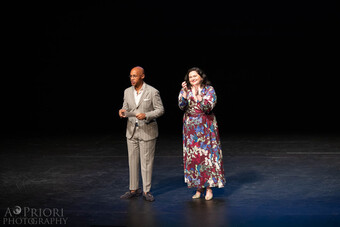









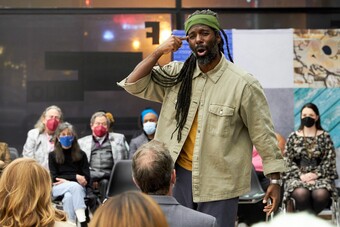




Comments
The article is just the start of the conversation—we want to know what you think about this subject, too! HowlRound is a space for knowledge-sharing, and we welcome spirited, thoughtful, and on-topic dialogue. Find our full comments policy here
Edris Cooper-Anifowoshe - GREAT Article! thank you for thinking about this in a multi-layered way, and laying this out so clearly and with fierce historical perspective. I was just thinking this a.m. -- walking my dog -- about how Playwrights Foundation supports black writers, and black theater because I have to give a talk today about our developmental work on Katori Hall's The Mountaintop, before it went on to production elsewhere. (Now back to the Bay Area at TheatreWorks - who have demonstrated much commitment to black artists... now that i think about it -- ) Anyway, I digress. I was thinking about the commitment we've made to develop work specifically by black playwrights at Playwrights Foundation - a play development center in the Bay Area - and whether or not it has been a commitment, or not. Certainly we have (and continue to) worked with the many FAB African American playwrights on the national front, but perhaps not specifically to black writers living here in the Bay Area. I'm on the fence about that question.. I'm not sure if we have made a real commitment. Or lived up to it is maybe more accurate, not sure if we've lived up to our commitment. One thing I've noticed recently - and committed to, that I'd like to bring up for ... attention, I guess: Oakland CA has a VIBRANT community of poet-playwrights, of burgeoning writers about to break into theater. I would say Chinaka Hodge is at the forefront of this rising young, black, super smart, artistic performative and growing movement. LHT, BRAVA, Playwrights Foundation, Cultural Odyssey and others might gather in support of these young voices who are writing a new genre, experimental urban poetic experiential. Just a thought to add to the mix.
<3 Amy
Hi Amy, Tis true! Playwrights Foundation has developed the work of Katori Hall, Keith Adkins, Robert Henry Johnson and many other Black playwrights. You have a mandate I believe to support this work, correct. Definitely, worth mentioning. Apologies for the overlook - I also mentioned TheatreWorks, Cutting Ball and Crowded Fire but I had to cut some words! But I will mention them here - companies that hire black people for shows and not just in February. I was focusing on the role that Black theatres play in the Bay Area, but the overview is more complex than that I know. Thanks for weighing in.
With so many stories of African American culture yet untold, and the Black American civil and cultural rights fought for so fiercely in word and deed by Lorraine Hansberry herself, I too wonder why the goal is to move away from work that trains and illuminates Black Actors and the Black American experience @ LHT! This is certainly NOT the spirit the company was founded in by Quintin and Stanley. With all the inclusive rhetoric in this new philosophy, at the end of the day LHT is putting another mound of graveyard dirt on the works for the live theater by Baldwin, Angelou, Baraka and Hansberry herself! When has LHT last produced "Sign in Sidney Brustein's Window" or "Young Gifted and Black" By Miss Hansberry? Where can we go to discuss and examine how vital these works are to the state and study of all American life strictly from an African American perspective? If LHT is not going to continue the still brutal battle for professioanl development of Black artists and the remounting and exploration of our classic works as well as hungrily encourage and seek out the work of the new Black writer, LHT is essentially pimpng Hansberry's name and life goals! Too bad.
A play has to be how old to be valid? What about the last season with Pearl Cleage's Blues For An Alabama Sky? And Douglas Turner Ward's Day of Absence
Wel stated. I agree, all Theater should address the "World View" particularly when a presentation comes from a specific Cultural perspective. That is how we find what is common among us.
With so many stories of African American culture yet untold, and the Black American civil and cultural rights fought for so fiercely in word and deed by Lorraine Hansberry herself, I too wonder why the goal is to move away from work that trains and illuminates the Black American experience @ LHT! This is certainly NOT the spirit the company was founded in by Quintin and Stanley. With all the inclusive rhetoric in this new philosophy, at the end of the day LHT is putting another mound of graveyard dirt on the works of for the live theater by Baldwin, Angelou, Baraka and Hansberry herself! When has LHT last produced "Sign in Sidney Brustein's Window" or "Young Gifted and Black" By Miss Hansberry. Where can we go to discuss and examine how vital these works are to the state of all American life strictly from an African American perspective? If LHT is not going to continue the still brutal battle for professioanl development of Black artists as well as the remounting and exploration of our classic works as well as hungrily encourage and seek out the work of the new Black writer, LHT is essentially pimpng Hansberry's name and life goals! Too bad.
I think you have it twisted! Lorraine Hansberry was criticized herself for writing outside of the "Black American experience" Lorraine Hansberry Theater is pretty much the only theater that is dedicated to developing Black Talent in the Bay Area (with the exception I have mentioned, AA Shakespeare) In the past two years,(Steven has only been there a bit less than two years) they have employed MOST of the Black actors, directors and other theater artists that work in the Bay Area and pay a comparable wage I might add!! ALL work trains and illuminates the Black experience for Black actors - not just certain plays! It is not only the plays of the past that we must give attention to and I applaud SAJ for giving voice and work to LIVING! Black playwrights. I can only think of ONE LIVING Black female playwright that was produced under Stanley's leadership (Ntozake Shange, I think there may have been one more but it was a coproduction that was brought to him through another theatre). That was one of the things the community asked Mr. Jones to change. To give more work to local Black professional actors, directors and playwrights. I would say Steven Anthony Jones has done that as much or more than Stanley and Quentin did. Actors and other theatre artists need to be trained for the theatre of the 21st century. Black playwright are writing plays that take a myriad of shapes and require new skills. And lastly, you are not going to have that discussion, i.e., from strictly an African American perspective in San Francisco with a population of 6% . What do you think is the makeup of the audience? (perhaps you can have that moment in Oakland, hence taking it to the people makes sense),
Insightful and powerful. Keep hope alive!
Thanks Edris. Great piece.
Edris, thanks for this great overview of black theatre in the Bay Area. I am so interested in the way that you and Steven Anthony Jones and so many in our region are reinventing what "culturally specific" theatre is and means (isn't all theatre "culturally specific?") in 21st century San Francisco and 21st century America.
Perhaps one approach might be for each play by a well-known black writer currently working to pair her/him with a younger black writer in a mentor/mentee relationship. In NYC, the Cherry Lane's Mentor Project pairs writers with mentors and it's valuable to be mentored. In this way, there is an institutional mission to encourage new work, and if the roles for black actors are there, there won't be a drive to migrate to the same degree. But artists can't hang out and wait and hope there will be more roles for their demographic, they risk stagnancy and artistic impoverishment. When people have a sense of the institutional momentum of opportunity, they gravitate to making the work and they build community. Individuals can create other opportunities for artists, but institutions like yours with committed (and even renewed) focus on generating and supporting work by and for black artists makes a difference. We all need role models and invitations to the table, particularly those who are marginalized. Thanks for doing the work you're doing, I wish you success. Another option is to perhaps host a company like New Black Fest and make partnership with initiatives.
Winter Miller - it's like you've been reading my mind. Bless you.
Great article!!!